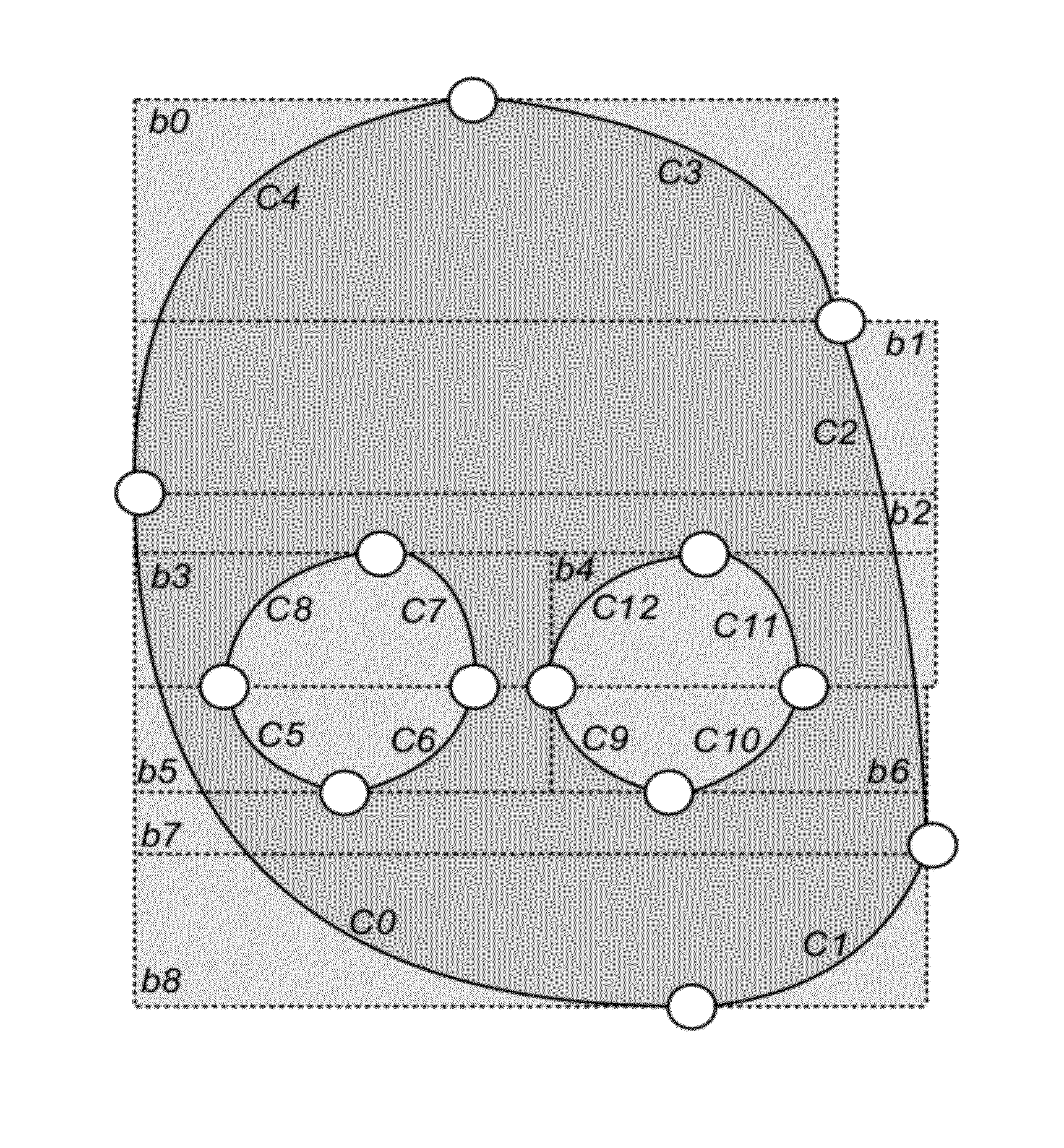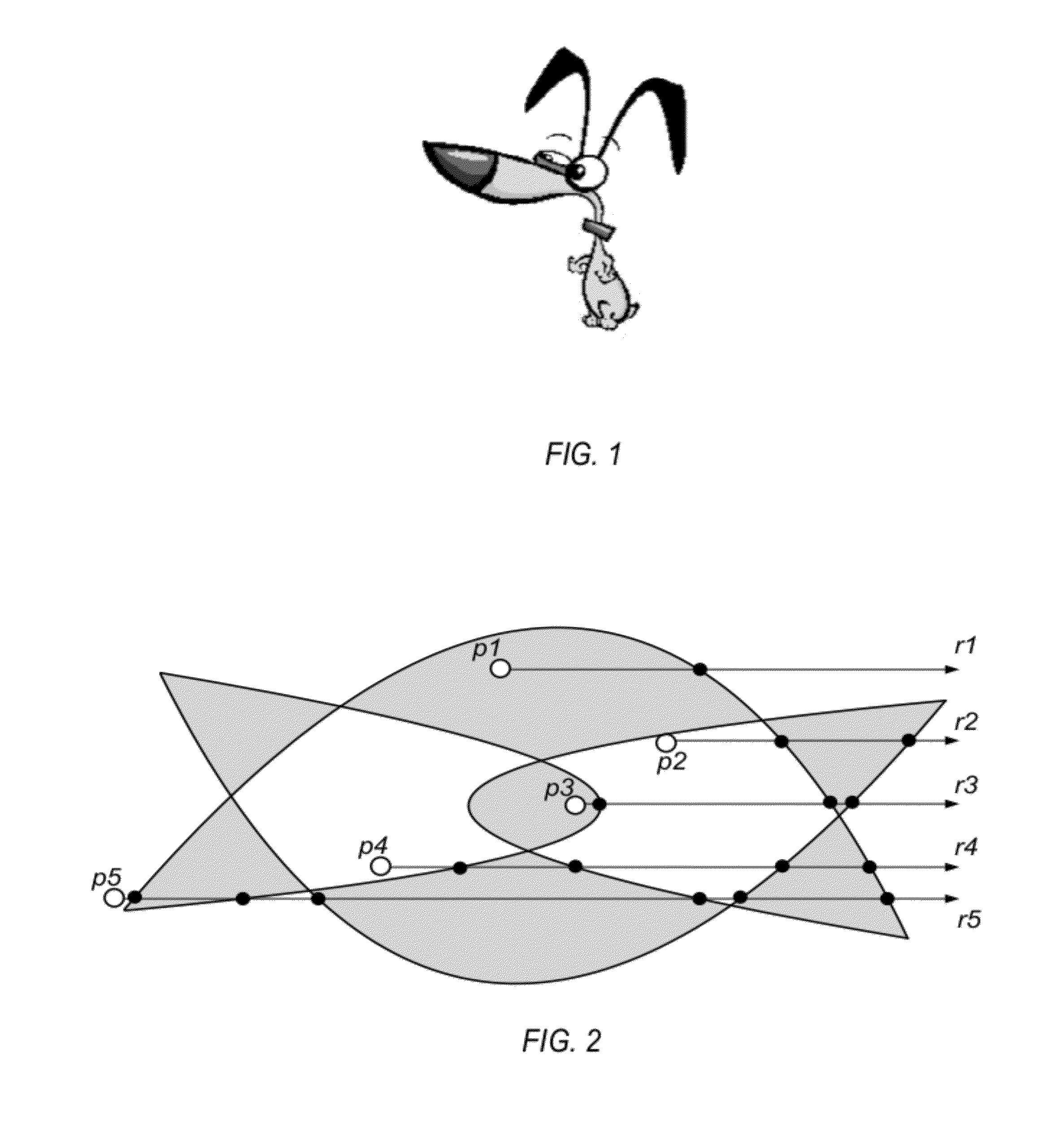Methods and apparatus for rendering vector art on graphics hardware
a technology of graphics hardware and methods, applied in the direction of 2d-image generation, instruments, computing, etc., can solve the problems of piece-wise linear approximation, significant challenges in mismatch, and high cost of triangulation on the cpu
- Summary
- Abstract
- Description
- Claims
- Application Information
AI Technical Summary
Benefits of technology
Problems solved by technology
Method used
Image
Examples
example implementations
[0099]FIG. 9 illustrates an example vector art rendering module that may implement the vector art rendering methods as illustrated in FIGS. 2 through 7, according to some embodiments. FIG. 10 illustrates an example computer system on which embodiments of vector art rendering module 400 may be implemented. Vector art rendering module 400 may include a CPU processing component 410 and a GPU processing component 420. GPU processing component 420 may implement a vertex shader 422 and a pixel shader 428. Vector art rendering module 400 may receive a set of Bézier-bounded curves as input. See, for example, FIGS. 1, 2 and 4A. CPU processing component 410 subdivides the curves into a plurality of monotonic curve segments and generates a plurality of rectangular regions from the curve segments, with each rectangle referencing at most n curves. Each rectangle bounds portions of curve segments that are in or cross through the rectangle. CPU processing component 410 transfers the analytic curve...
PUM
 Login to View More
Login to View More Abstract
Description
Claims
Application Information
 Login to View More
Login to View More - R&D
- Intellectual Property
- Life Sciences
- Materials
- Tech Scout
- Unparalleled Data Quality
- Higher Quality Content
- 60% Fewer Hallucinations
Browse by: Latest US Patents, China's latest patents, Technical Efficacy Thesaurus, Application Domain, Technology Topic, Popular Technical Reports.
© 2025 PatSnap. All rights reserved.Legal|Privacy policy|Modern Slavery Act Transparency Statement|Sitemap|About US| Contact US: help@patsnap.com



